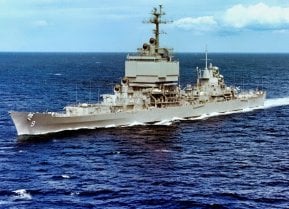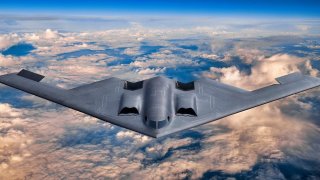B-2 Spirit: The $2 Billion Stealth Bomber's Value Questioned
The Northrop Grumman B-2 Spirit stands as the pinnacle of U.S. military aviation technology and investment, boasting unparalleled stealth capabilities alongside its strategic nuclear payload delivery. With each unit costing approximately $2 billion when adjusted for inflation, it dwarfs the price tags of other advanced military aircraft, raising questions about its cost-effectiveness.
Summary: The Northrop Grumman B-2 Spirit stands as the pinnacle of U.S. military aviation technology and investment, boasting unparalleled stealth capabilities alongside its strategic nuclear payload delivery. With each unit costing approximately $2 billion when adjusted for inflation, it dwarfs the price tags of other advanced military aircraft, raising questions about its cost-effectiveness. Despite its impressive stealth technology designed to enhance the U.S.'s nuclear deterrence by ensuring unpredictability in nuclear strike capabilities, the necessity of such an expensive asset, given the existing comprehensive nuclear triad, remains debatable.
The most expensive aircraft in the U.S. military’s inventory is the Northrop Grumman B-2 Spirit, and there is no close second.
The world’s first stealth bomber, the B-2 is a flying-wing aircraft distinctive for its lack of vertical stabilizers, horizontal stabilizers, or traditional fuselage. Painted black, the B-2 looks worthy of a Batman film.
But despite distinct appearances and world’s-first claims, the B-2’s most notable feature is its cost. When first funded in the early 1990s, the B-2 cost $1 billion per unit. When adjusted for inflation, each B-2 costs upward of $2 billion. For a single aircraft, that is hard to justify.
To put the B-2’s cost in perspective, consider the price tags of other U.S. military aircraft.
The F-22 Raptor, the world’s first fifth-generation fighter, costs $350 million per unit. The C-17 Globemaster, which can transport tremendous quantities of U.S. military equipment around the world, costs up to $340 million per unit. The P-8 Poseidon costs $290 million per unit, and the F-35 Joint Strike Fighter, the interconnected fifth-generation marvel, costs $115 million per unit.
Air Force One itself, designed to support the head of the entire executive branch in transit, costs $660 million. You could buy four Air Force Ones for the price of one B-2. You could buy six F-22s, or about seventeen F-35s. For the price of one B-2, you could cover about 40% of the cost to build a Nimitz-class nuclear-powered aircraft carrier that houses about 5,000 sailors and 100 aircraft.
So, were the B-2’s unique costs worthwhile? Did the U.S., at $2 billion per unit, get its money’s worth? Short answer: probably not.
B-2 Spirit: Expensive Deterrence
The B-2’s primary selling point is the fusion of stealth technology with the ability to deploy nuclear weapons. In theory, the B-2 allows the U.S. to deploy nuclear weapons with pinpoint precision, without the delivery method being detected beforehand.
Essentially, the B-2’s stealth features were meant to remove predictability from U.S. nuclear deployment tactics, inspiring greater caution from U.S. adversaries who would be forced to assume the U.S. could strike with surprise, anytime and anywhere. In short, the B-2 is designed to enhance the “air” portion of the U.S.’ air-land-and-sea nuclear triad, which in turn enhances Washington’s nuclear deterrence capabilities.
Without question, a stealth bomber enhances the nuclear triad. And while the U.S. has a strategic incentive to maintain nuclear superiority over other nations, at a certain point, systems become somewhat redundant. That’s not to say that another weapons system can reproduce the precise abilities of the B-2, or the operational options it confers. But the U.S. already has first and second nuclear strike options. It has a large and wide-ranging stockpile of nuclear-tipped intercontinental ballistic missiles. Its nuclear missile-armed submarines lurk stealthily in oceans around the world. And of course, non-stealth bombers like the B-1 and B-52 can deliver nuclear payloads, although they are less likely than the B-2 to survive in contested airspace.
Sure, the U.S. has a more complete nuclear triad with the B-2 stealth bomber. It is, arguably, incrementally safer with the B-2 stealth bomber on call. But at $2 billion per unit, the B-2’s marginal benefits are hard to financially justify.
About the Author: Harrison Kass
Harrison Kass is a defense and national security writer with over 1,000 total pieces on issues involving global affairs. An attorney, pilot, guitarist, and minor pro hockey player, Harrison joined the US Air Force as a Pilot Trainee but was medically discharged. Harrison holds a BA from Lake Forest College, a JD from the University of Oregon, and an MA from New York University. Harrison listens to Dokken.


